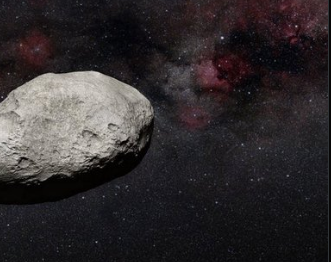The fact is asteroids are passing by our planet on a regular basis. It is only now that we have the ability to see many of them, but not all.
This week, stargazers are on alert as two significant asteroids are set to pass near Earth just days before the global observance of Asteroid Day. The larger of the two, an asteroid the size of Mount Everest and named 415029 (2011 UL21), is expected to make its closest approach this Thursday, at a safe distance of over 4 million miles away from our planet. This distance is about 17 times farther than the moon’s orbit around Earth. Despite its size, which dwarfs 99% of near-Earth asteroids at over 7,500 feet in diameter, it poses no immediate threat.
Watch out! Two asteroids are approaching us. Watch their path live.https://t.co/6Fj0u5iEHD
— Yulia Travels (@YuliaTravels) June 29, 2024
Following closely behind, a smaller asteroid, 2024 MK, discovered only weeks ago by astronomers in South Africa, will sweep closer to Earth, coming within 180,000 miles—closer than the moon. Although it measures less than 11% of the size of the Everest-sized asteroid, it could still cause considerable damage if it were to impact Earth. An impact by an asteroid of this size could potentially destroy a city, drawing comparisons to historical catastrophic events.
The fast approaching “Space Potato of Death” asteroid explains why many politicians DGAF about you, me or anyone other than themselves and their friends/families. pic.twitter.com/k1ySVE6ys6
— #0perationRedHouse@SecretButWarmBunkerInAntarctica (@EMoosk99) June 30, 2024
The flybys are notable not just for their proximity but also for their timing, occurring just before Asteroid Day on June 30. This day marks the anniversary of the largest recorded asteroid impact in history, which occurred in 1908 when an asteroid exploded over Siberia, releasing energy equivalent to 1,000 times that of the Hiroshima nuclear bomb. This event flattened a vast forest area and is commemorated to raise awareness about asteroid threats.
In addition to monitoring these celestial passersby, NASA has been proactive in planetary defense. A recent highlight was the successful alteration of the orbit of Dimorphos, a small asteroid, by a NASA spacecraft. This mission marked humanity’s first successful attempt at modifying the path of an asteroid, showcasing potential strategies to deflect deadly objects in the future.
Large asteroid to pass between Earth and the moon on Saturday | CBC News.
Despite advances in nearby asteroid detection, there are still blind spots. The late detection and size of this approaching object is a wake-up call for global space agencies. https://t.co/NN3uEr94US— Chris Carlson (@Metrilog) June 28, 2024
As we approach Asteroid Day, the focus intensifies on the need for continued vigilance and preparedness against potential asteroid threats. The day itself will be marked by various educational and public engagement activities aimed at increasing awareness and understanding of asteroids. This includes lectures, workshops, and family-oriented events organized by the Asteroid Foundation in Luxembourg.
Key Points:
i. Two asteroids will pass near Earth this week, with the larger one, comparable in size to Mount Everest, maintaining a safe distance of over 4 million miles.
ii. The smaller asteroid, 2024 MK, poses a greater relative threat due to its closer approach, within the moon’s orbit, and could cause significant damage if it impacted Earth.
iii. These events precede Asteroid Day, which commemorates the largest asteroid impact recorded in 1908, highlighting the importance of awareness and preparedness.
iv. NASA’s recent success in altering an asteroid’s orbit demonstrates advancing capabilities in planetary defense, crucial for mitigating future threats.
v. Asteroid Day will feature educational events and activities, emphasizing the ongoing need to monitor and understand asteroids.
RM Tomi – Reprinted with permission of Whatfinger News



